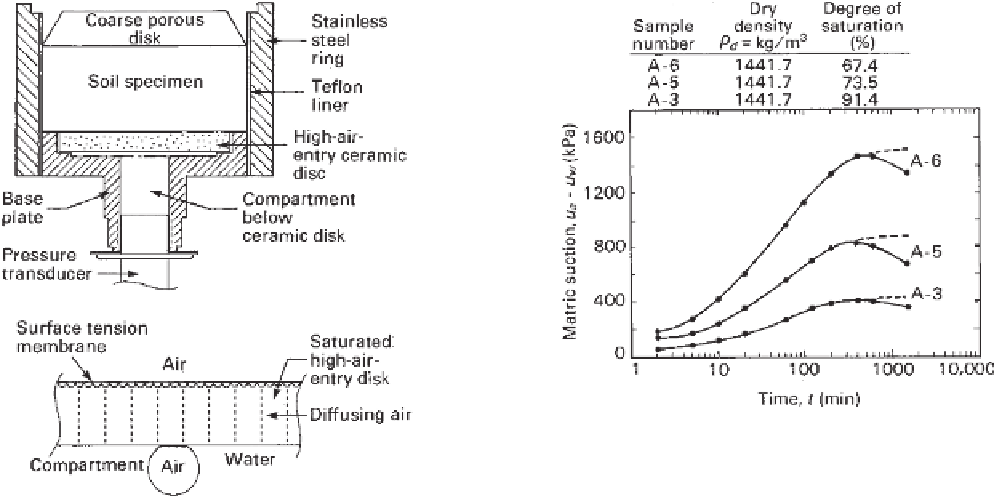Environmental Engineering Reference
In-Depth Information
1.2 x 10
−
5
1.0 x 10
−
5
8.0 x 10
−
6
6.0 x 10
−
6
4.0 x 10
−
6
2.0 x 10
−
6
0
−
80
−
60
−
40
−
20
0
20
40
60
80
100
Average sample pressure, kPa
Figure 9.15
Air coefficients of permeability measured for various average applied air pressures
(after Ba-Te, 2005).
(a)
Figure 9.17
Development of matric suction in statically com-
pacted Regina clay using axis translation technique (from Pufahl,
1970).
(b)
in the soil is decreased. Air diffusion imposes a limitation on
the closed system measurement of pore-water pressure.
Drained shear strength tests and volume change tests on
unsaturated soils are performed by controlling the pore-
water pressure
u
w
and the pore-air pressure
u
a
. Determining
the change in water volume involves measuring the flow of
water to and from the soil specimen. Diffused air also moves
through the water in the high-air-entry disk. Therefore, a dif-
fused air volume indicator should be used to independently
measure the diffused air volume. A correction needs to be
applied to the measured overall fluid volume change (i.e.,
water and dissolved air). The diffused air beneath the disk
can also prevent or retard the uptake of water if the soil
specimen should tend to expand or dilate during the test.
Figure 9.16
Replacement of water in compartment below high-
air-entry disk by diffused air (from Fredlund, 1975c): (a) assembly
showing compartment below high-air-entry disk; (b) air diffusion
through saturated high-air-entry disk.
The water pressure measurement gradually changes from its
original equilibrium value to the applied air pressure. The
matric suction of the soil specimen does not tend to a constant
value but gradually decreases with time. The air diffusion
problem is common to null-type measurements of matric suc-
tion, as shown by the results in Fig. 9.17. The measured matric
suction increases until the flow of diffused air forces water
into the soil specimen with the result that the matric suction





















Search WWH ::

Custom Search